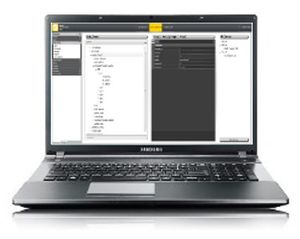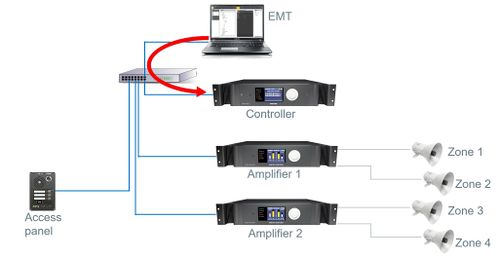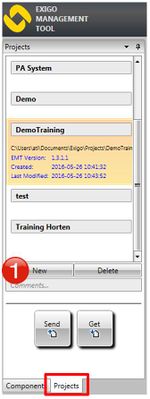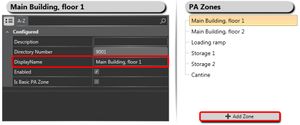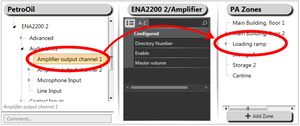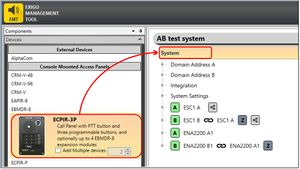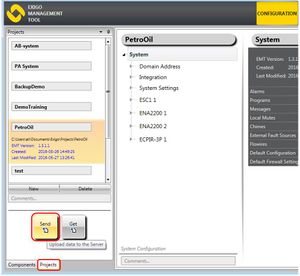Difference between revisions of "EMT Getting Started"
Jump to navigation
Jump to search
| Line 4: | Line 4: | ||
This article describes how to use EMT to create and upload a new database.<br> | This article describes how to use EMT to create and upload a new database.<br> | ||
Before uploading a complete new database it is recommended to do a factory default of the controller: <br> | Before uploading a complete new database it is recommended to do a factory default of the controller: <br> | ||
| − | + | Log on to the Primary System Controller and go to '''System Maintenance''' -> '''System Recovery''' -> '''Load Factory Defaults''' | |
To create and upload a database, do the following: | To create and upload a database, do the following: | ||
Revision as of 12:46, 5 January 2017
This article describes how to use EMT to create and upload a new database.
Before uploading a complete new database it is recommended to do a factory default of the controller:
Log on to the Primary System Controller and go to System Maintenance -> System Recovery -> Load Factory Defaults
To create and upload a database, do the following:
- Create a New Database
- Add Amplifiers
- Define Zones
- Add Access Panels
- Upload Database
Contents
Step 1. Create a New Database
In the navigation pane, select Projects view.
- Click New and follow the instructions in the wizard
All of the parameters in the wizard may be changed at a later stage.
Step 2. Add Amplifiers
- In Components view open Devices view
File:EMT getting started 3.JPG
EMT - Adding Amplifier
- Drag the Amplifier into System
Step 3. Define Zones
To add zones in the system:
- Click the + Add Zone button
It is recommended to give the zones a logical name.
To add amplifier outputs to the zone:
- Either drag the whole Amplifier or the Amplifier output channel to the zone
Step 4. Add Access Panels
- In Components view open Devices view
- Drag the desired Access Panel into System
To add functions to the access panel (for example Live Speech) see Live Speech.
Step 5. Upload Database
- In the Navigation pane, select Projects view
- Click Send to upload the new configuration database to the Exigo system
